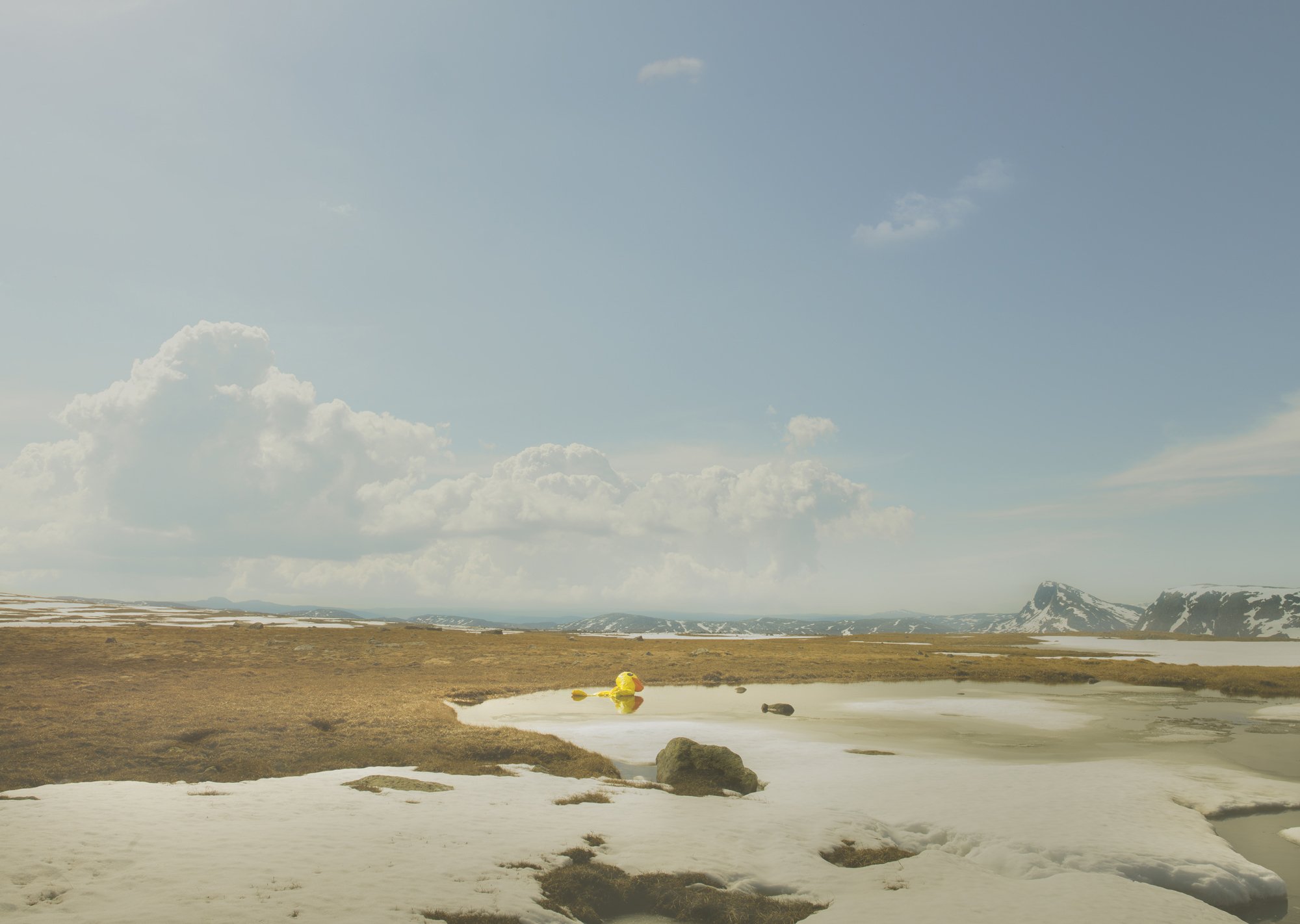
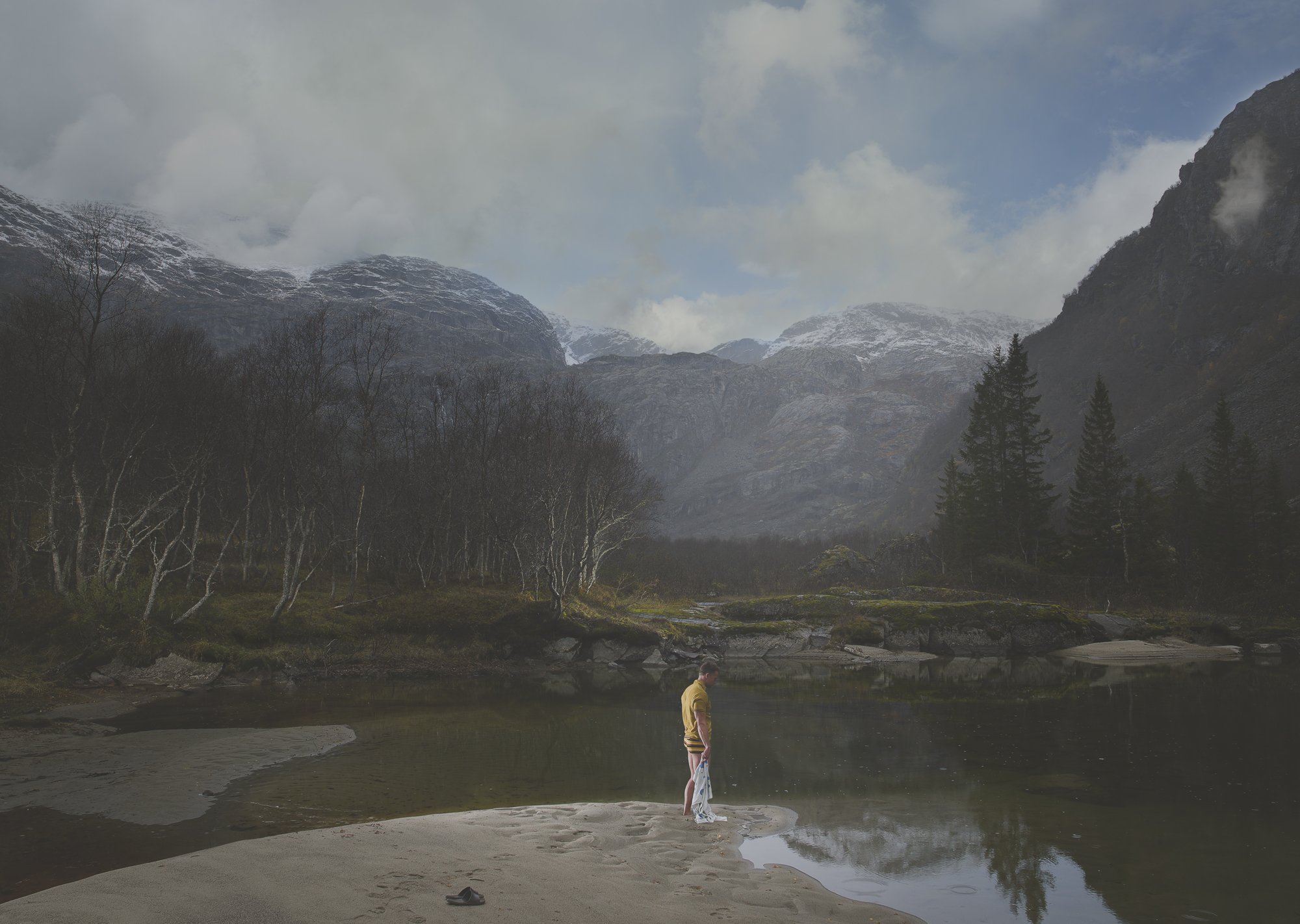
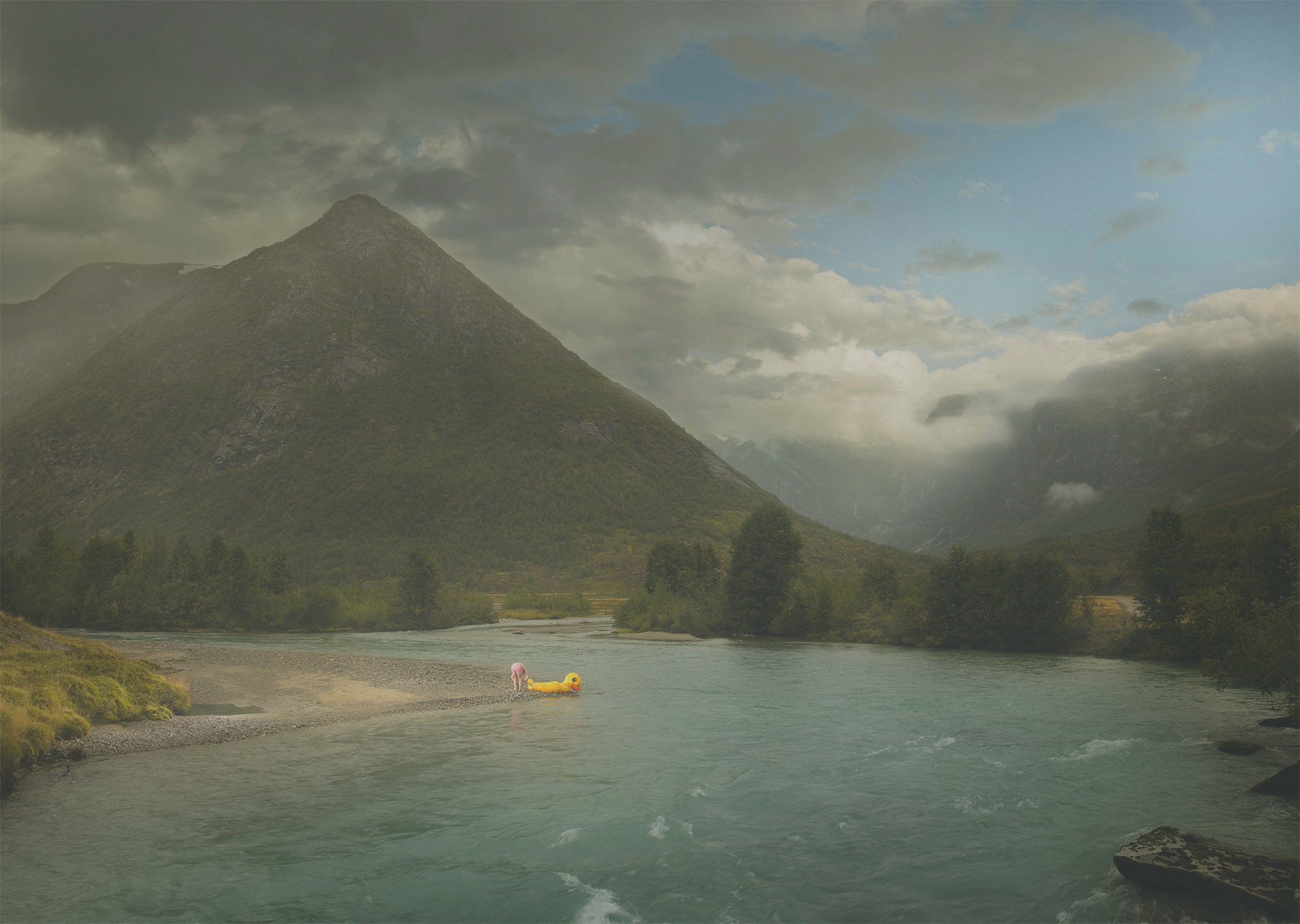
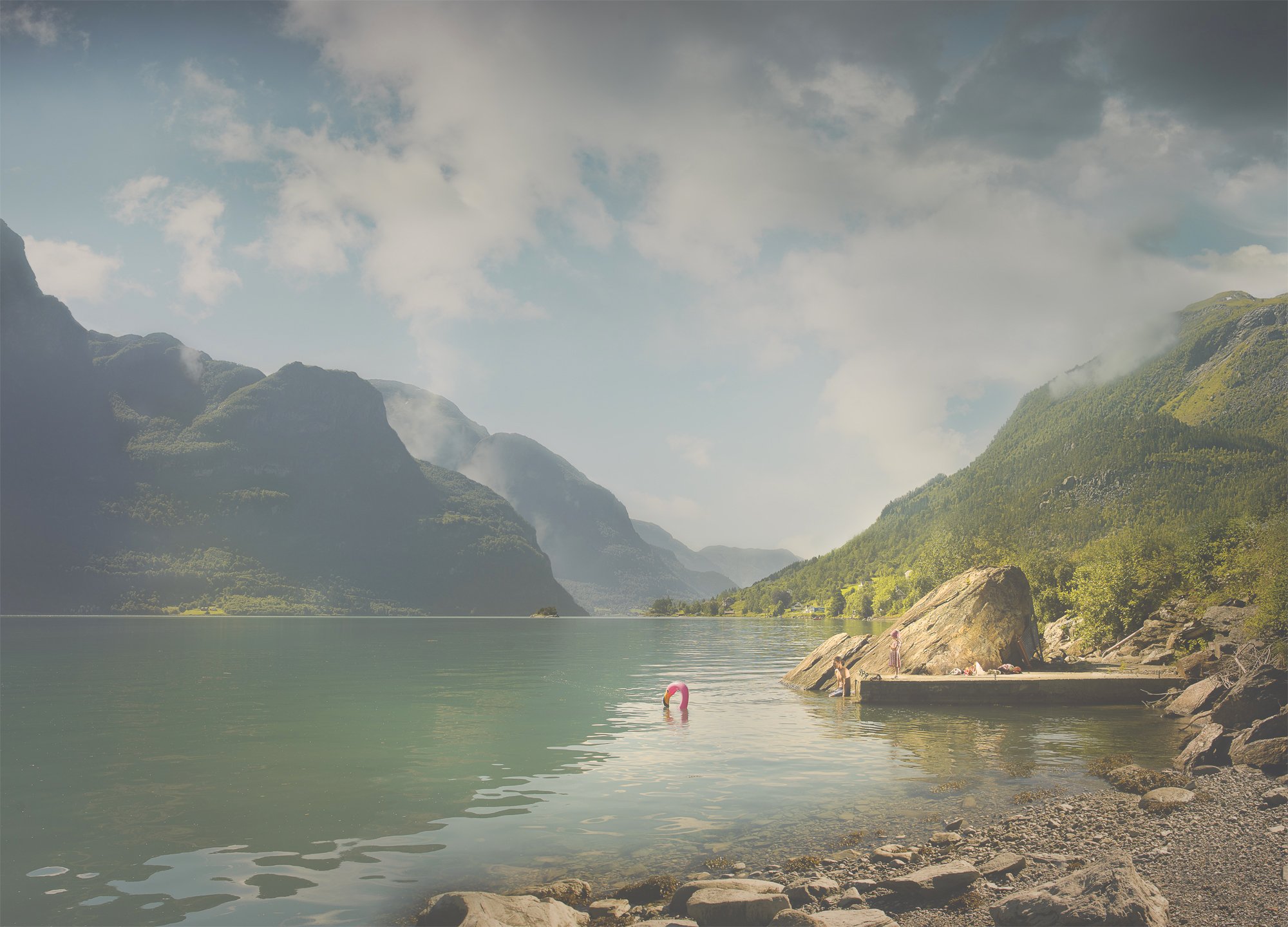
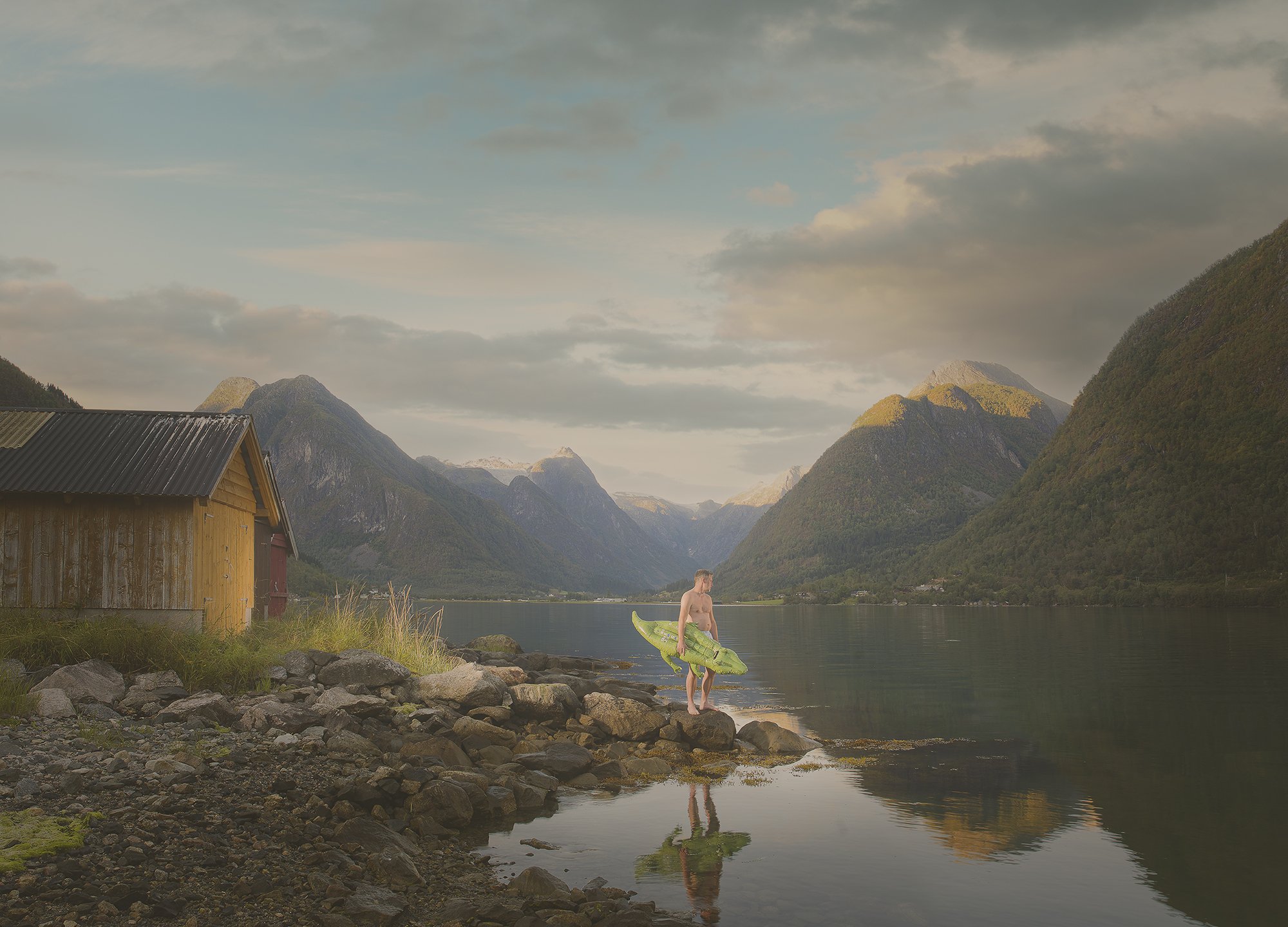

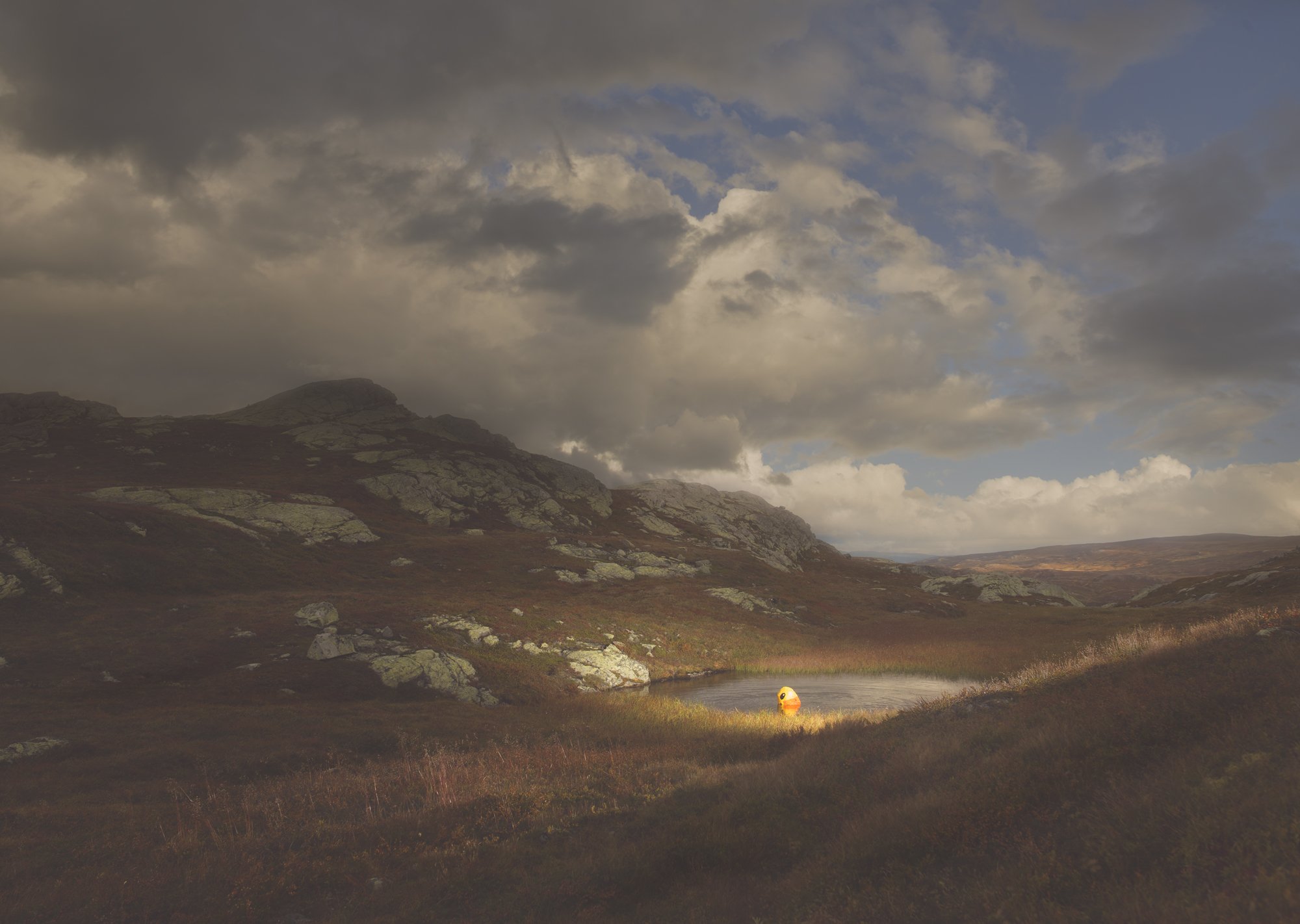
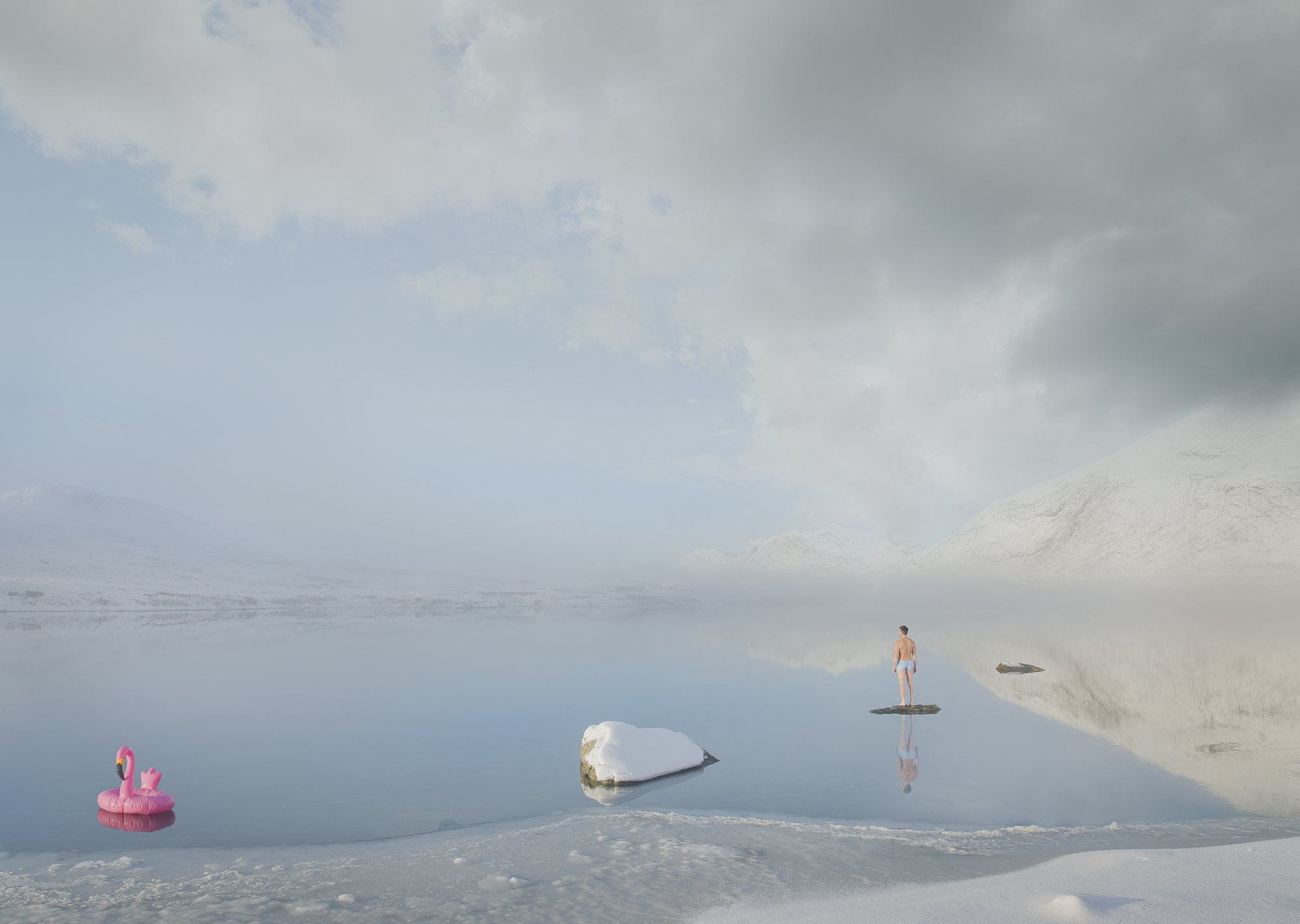
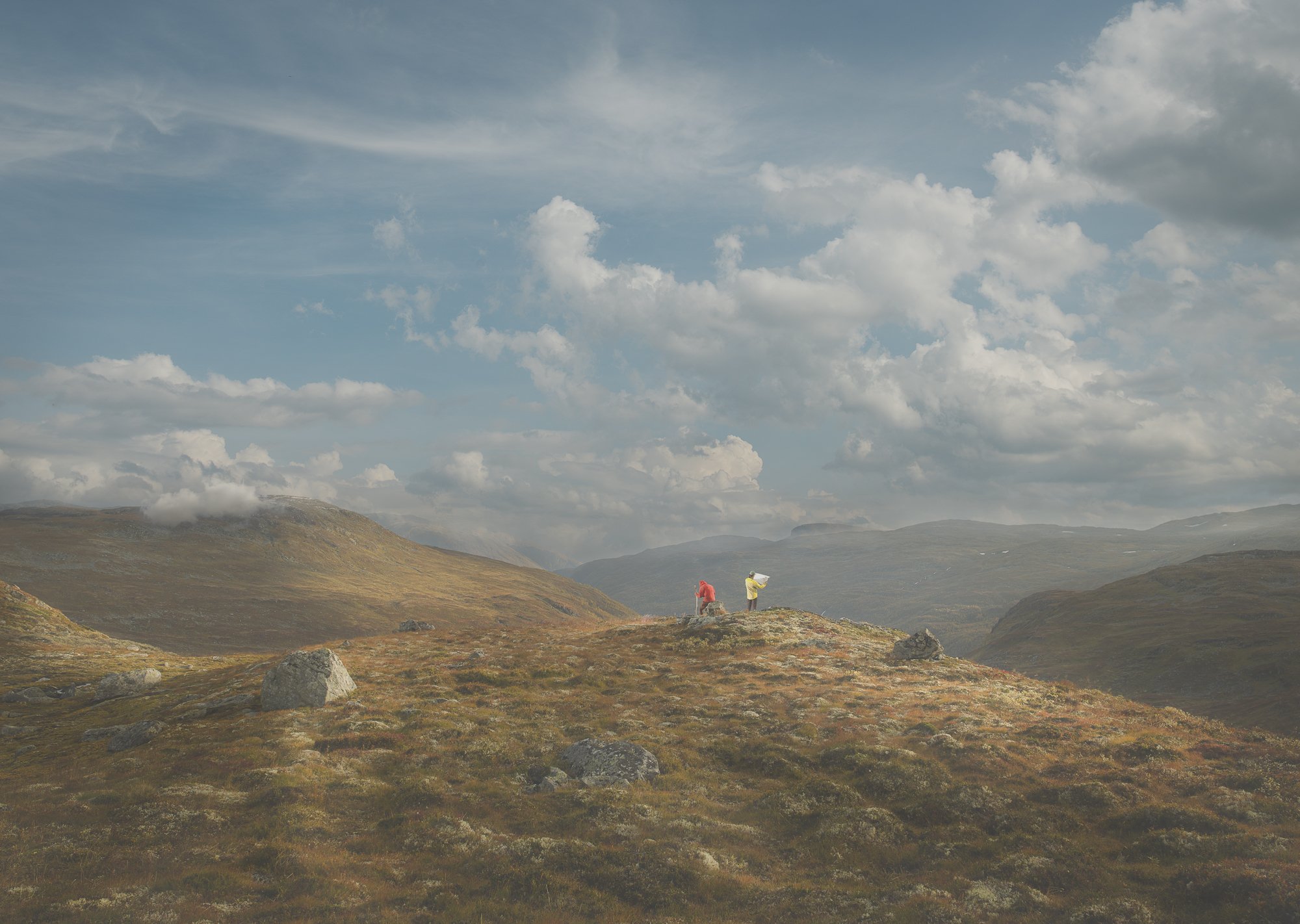
Brightly colored plastic inflatables punctuate the otherwise serene vistas in Ole Jørgensen’s wryly titled All that was left was a yellow duck. The Norwegian photographer’s playful series pays homage to the 19th-century Düsseldorf school painter Hans Gude (1825–1903), updated for modern times.
Jørgensen makes skilled use of the romantic landscape idiom, transforming his native rural surroundings into striking painterly compositions filled with subtle atmospheric effects. Likewise, the recurrence of solitary figures–hikers and swimmers absorbed in their activities or gazing off into the sublime distance–reveals a keen depth of understanding of the visual tradition that the series engages. Against these pristine natural expanses, small details such as a beach towel or an orange Gore-Tex jacket serve to pull the scenes forward in the present day.
The partially deflated yellow duck from which the series draws its title, along with several other animal inspired pool floats, inject a mix of humor and melancholic surrealism, as if the people in Jørgensen’s scenes are vacationers at the end of the world. In these items, we see nature supplanted and transformed into artificial and disposable commodities. While these props may be viewed as a critique on our contemporary culture, by working within the landscape genre, Jørgensen cleverly points to a potential culprit in the visual tradition that bears as much responsibility as any for turning nature into an image.
Carl Fuldner
Small size I Edition of 4 + 2AP
Big size I Edition of 4 + 2AP